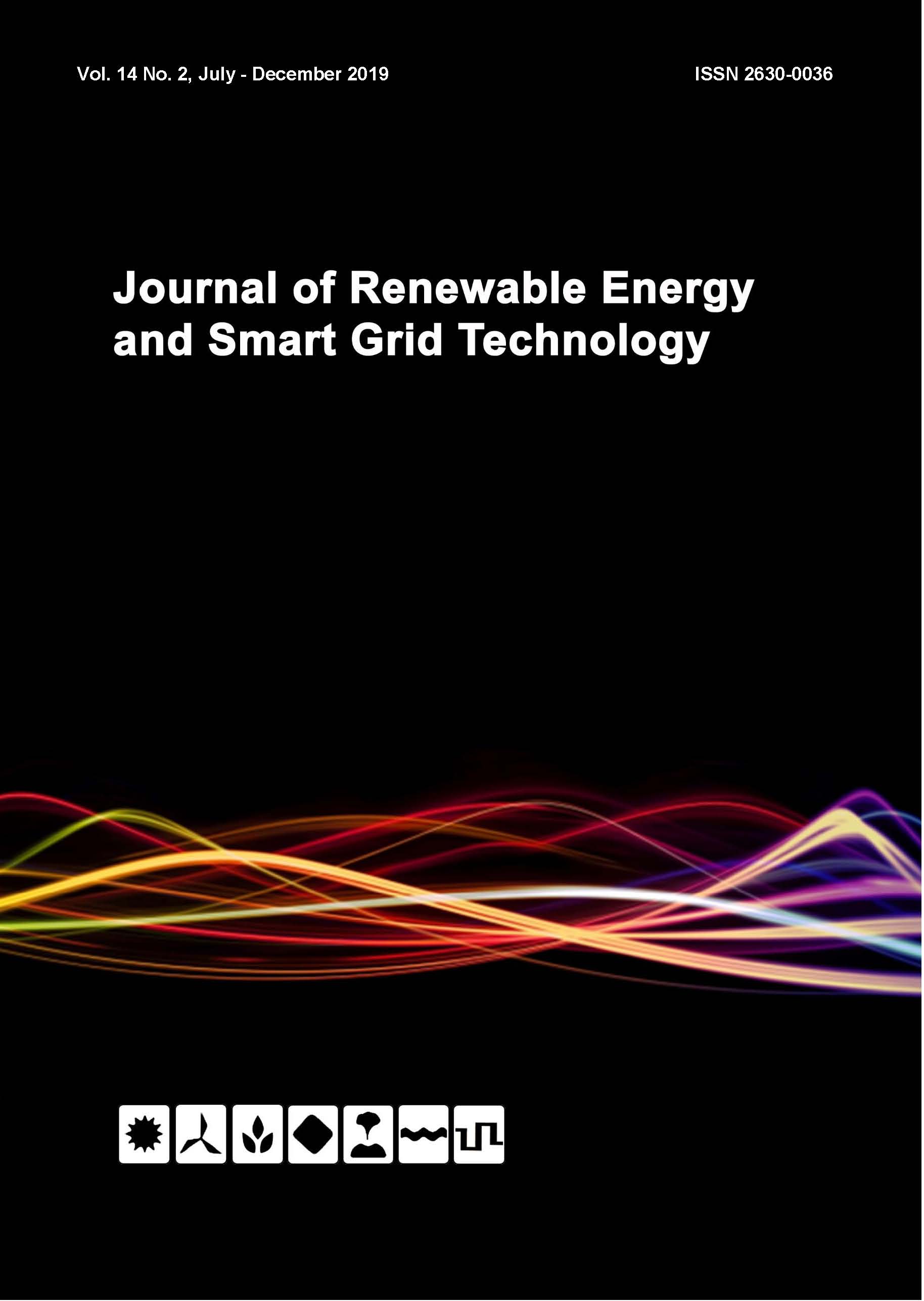Process of changing municipal solid waste into RDF using rotary bio-drying
Keywords:
Refuse Derived Fuel, Rotary Bio-drying, Dewatered Municipal Solid WasteAbstract
Refuse Derived Fuel (RDF) is produced by significantly reducing the moisture content of Municipal Solid Waste (MSW). By using bio-drying process inhabited the heat from the degradation process of organic waste. The MSW size was reduced to be less than 3 inches in order to have a thorough circulation of air. This study aimed to investigate the effects of rotation speed and initiate preheat time on the rotary bio-drying process for drying the high initial moisture content households solid waste, allowing satisfied energy content biofuel. The density was 212 kg/m3, air inlet was 0.075 m3/hr/kg, with the rotation rate at 0.1, 0.2, 0.3, 0.4 rpm, preheating at 45°C for 6, 9, 12 hours in 8 days, respectively. As a result, preheating at 45°C for 12 hours, rotating speed at 0.4 rpm, with the air inlet at 0.075 m3/hr/kg, resulting in the reducing of the moisture content to 13%, and the increasing of the heating value to 4,588.91 kcal/kg, which was higher than standard RDF at 3,820.80 kcal/kg. Rotary bio-drying process can improve the quality of the waste within a short period of time. The RDF with high heating value is required in the industrial sector for use as fuel in the manufacturing.
References
[2] Raksanau, C., & Maneechot, P. (2017). The potential of bio-drying process in improving quality of the processed waste from the mechanical biological treatment for industrial heating systems. Journal of Renewable Energy and Smart Grid Technology, 12(2), 53-63.
[3] Shao, L. M., Z. H. Ma, et al. (2010). Bio-drying and size sorting of municipal solid waste with high water content for improving energy recovery. Waste Management 30(7): 1165-1170.
[4] Mahl, B. (2005). Aeration as an instrument for process optimization of intensive processing in MBT plants. In: Kuehle Weidemeier, M. (ed) Proceedings International Symposium MBT 2005-Mechanical biological treatment and automatic sorting of municipal solid waste, November 2005, pp. 281-283 Cuvillier Varbe, Gothingen, Germany.
[5] Ling Z., W.M. Gu, et al. (2010). Effect of air-flow rate and turning frequency on bio-drying of dewatered sludge. water research 44(20). pp.6144-6152.
[6] Dufour, P. (2006). Control engineering in drying technology: review and trends. Drying Technol. 24, 889-904.
[7] Thomas H. Christenser. (2011). Solid Waste Technology & Management (Volume 2). United Kingdom: John Wiely & Sons.
[8] Kasberger, P. (1995). Das dynamisch gesteverte LESCHA-Verfahren (The dynamically controlled LESCHA-Process, in German). In: Wiemer, k. and Kern, M. (eds.). abfallwirtschaft Neues aus Forschung and praxis-Herstellerforum Bioabfall-Verfahrer der Kompostierung, Germany.
[9] Zhang, D. Q., He, P. J., Yu, L. Z., & Shao, L. M. (2009). Effect of inoculation time on the bio-drying performance of combined hydrolytic–aerobic process. Bioresource Technology, 100(3), 1087-1093.
[10] ZHANG, D., Pinjing, H. E., Liming, S. H. A. O., Taifeng, J. I. N., & Jingyao, H. A. N. (2008). Biodrying of municipal solid waste with high water content by combined hydrolytic-aerobic technology. Journal of Environmental Sciences, 20(12), 1534-1540.
[11] Adani, F., Baido, D., Calcaterra, E., & Genevini, P. (2002). The influence of biomass temperature on biostabilization–biodrying of municipal solid waste. Bioresource technology, 83(3), 173-179.
[12] Somsai, K., Tondee, T., & Kerdsuwan, S. (2016). Effect of airflow on moisture removal of rotary biodrying reactors. Jurnal Teknologi, 78(5-6).
[13] NETL. (2015). Waste. Retrieved from http://www.netldoe.gov/research.
[14] Varma, V. S., & Kalamdhad, A. S. (2014). Stability and microbial community analysis during rotary drum composting of vegetable waste. International Journal of Recycling of Organic Waste in Agriculture, 3(2), 52.
[15] Zhao, L., W. M. Gu, et al. (2010). Effect of air-flow rate and turning frequency on bio-drying of dewatered sludge. water research 44(20): 6144-6152.
[16] Chaya, W. and S. H. Gheewala. (2007). Life cycle assessment of MSW-to-energy schemes in Thailand. Journal of Cleaner Production (15), 1463-1468.
Downloads
Published
How to Cite
Issue
Section
License
All copyrights of the above manuscript, including rights to publish in any media, are transferred to the SGtech.
The authors retain the following rights;
1. All proprietary rights other than copyright.
2. Re-use of all or part of the above manuscript in their work.
3. Reproduction of the above manuscript for author’s personal use or for company/institution use provided that
(a) prior permission of SGtech is obtained,
(b) the source and SGtech copyright notice are indicated, and
(c) the copies are not offered for sale.









